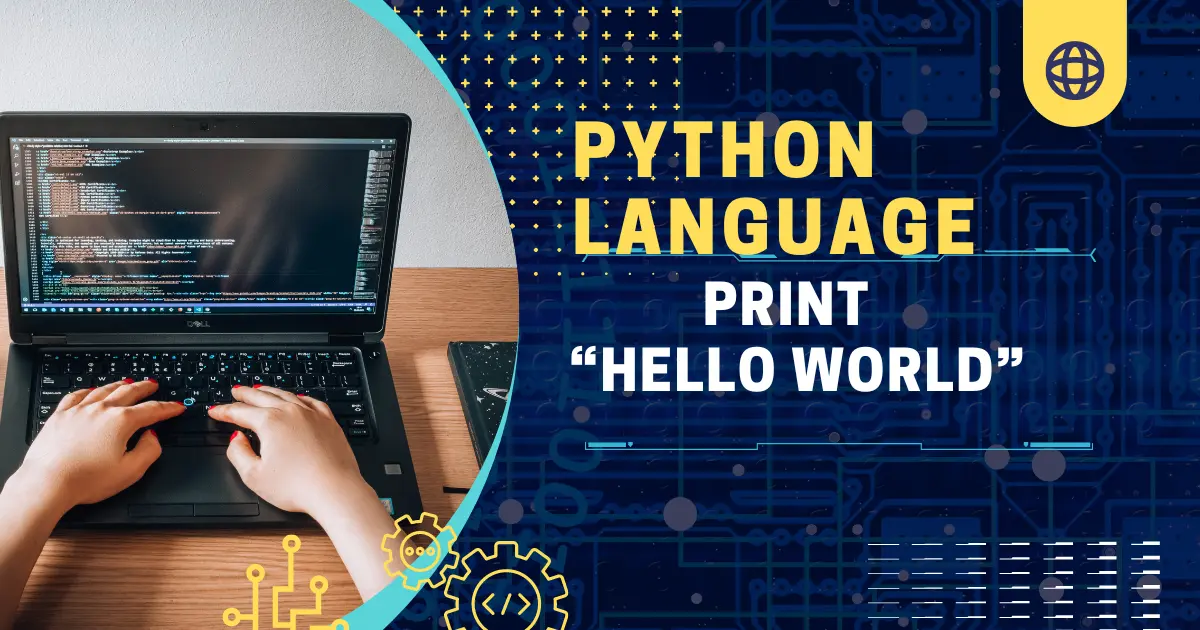
Python Language Hello World
Python language is a excessive-stage, interpreted programming language recognized for its simplicity and readability. It’s a fave among beginners and seasoned builders alike, gambling a important function in various domain names like internet improvement, statistics technological know-how, artificial intelligence, and automation. If you’re just getting began with programming, writing a “Hello World” software in Python is the proper manner to dive in.
History of Python
Python was created by means of Guido van Rossum and primary released in 1991. The language became designed with an emphasis on code clarity and simplicity. Over the years, Python has gone through considerable evolution, with main variations being Python 2 and Python 3. Each model brought enhancements and upgrades, with Python three becoming the standard in recent years.
Why Python is Popular
Python’s recognition stems from its simplicity and versatility. Its syntax is easy and easy to apprehend, making it accessible to beginners. Moreover, Python is surprisingly versatile and used in diverse fields, from net development and automation to facts analysis and machine mastering. This huge range of programs guarantees that Python remains a applicable and treasured ability.
Setting Up Python Environment
To begin coding in Python, you want to set up your improvement environment. Here’s how:
- Downloading Python: Visit the reputable Python internet site (python.Org) and down load the modern version appropriate in your running machine.
- Installing Python: Follow the installation commands provided at the website. Ensure that you check the container to add Python on your machine’s PATH during the set up system.
- Setting up an IDE: While you can write Python code in any textual content editor, the use of an Integrated Development Environment (IDE) like PyCharm, VS Code, or even IDLE (Python’s default IDE) could make your coding revel in smoother.
Writing Your First Python Program
The lifestyle of writing a "Hello World" application is a mild creation to any programming language. Here’s the way to do it in Python:
- Open your IDE or text editor.
- Create a new file and name it
hello_world.py. - Type the following code:pythonCopy code
print("Hello, World!") - Save the file.
Running Your Python Program
You can run your Python software in a couple of methods:
- Running from the command line:
- Open your command prompt or terminal.
- Navigate to the directory where your
hello_world.pyfile is located. - Type
python hello_world.pyand press Enter.
- Running from an IDE:
- Simply click the run button or use the appropriate keyboard shortcut (usually F5) in your IDE.
Understanding the Code
Let’s wreck down the code:
print("Hello, World!"): This line makes use of the print feature to output the textual content “Hello, World!” to the display. The print feature is one of the most essential functions in Python, used to show facts to the user.
PHP an Object-Oriented Programming Language?
Common Errors and Troubleshooting
As a beginner, you might encounter some common errors:
- Syntax errors: These occur when the code is not written in the correct syntax. For example, missing a parenthesis in the
printfunction. - Indentation errors: Python uses indentation to define blocks of code. Ensure that your code is correctly indented.
Python Syntax Basics
As a novice, you may come across some common errors:
- Variables and data types: Variables in Python can store different types of data, such as integers, floats, strings, and lists.pythonCopy code
x = 5 y = 3.14 name = "Python" - Basic operators: Python supports various operators for arithmetic, comparison, and logical operations.pythonCopy code
result = x + y
Control Structures in Python
Control structures help in making decisions and repeating tasks:
- Conditional statements: Use
if,elif, andelseto make decisions in your code.pythonCopy codeif x > y: print("x is greater than y") else: print("y is greater than or equal to x") - Loops: Use
forandwhileloops to repeat tasks.pythonCopy codefor i in range(5): print(i)
Functions in Python
Functions allow you to encapsulate code into reusable blocks:
- Defining functions: Use the
defkeyword to define a function.pythonCopy codedef greet(name): return f"Hello, {name}!" - Calling functions: Simply use the function name followed by parentheses.pythonCopy code
print(greet("World"))
Modules and Libraries
Python’s electricity lies in its large standard library and third-party modules:
- Importing modules: Use the
importstatement to bring in a module.pythonCopy codeimport math print(math.sqrt(16)) - Using standard libraries: Python’s standard library provides modules for various tasks, like handling dates, file I/O, and more.
Practical Applications of Python
Python is used in numerous fields:
- Web development: Frameworks like Django and Flask make it easy to build web applications.
- Data science: Libraries like Pandas, NumPy, and Matplotlib are essential for data analysis and visualization.
- Automation: Python can automate repetitive tasks, making it a go-to tool for scripting.
C++ Programming for Embedded Systems
Learning Resources
Python is utilized in severa fields:
- Online courses: Websites like Coursera, Udemy, and Codecademy offer comprehensive Python courses.
- Books and documentation: Books like “Automate the Boring Stuff with Python” and the official Python documentation are invaluable.
- Community and forums: Join communities like Stack Overflow, Reddit, and Python.org forums to connect with other learners and experts.
Python is an incredibly effective and flexible programming language, perfect for beginners and experts alike. Its readability and simplicity of use make it an tremendous preference for your first programming language. By beginning with the “Hello World” software, you’ve taken your first step into the widespread international of Python. Keep gaining knowledge of, experimenting, and building – the opportunities are countless!
FAQs
What is Python used for?
Python is used for web development, statistics technological know-how, gadget learning, automation, and extra. Its versatility makes it a popular preference for plenty packages.
How do I start learning Python?
Begin with on line tutorials and courses, practice writing simple programs, and steadily tackle extra complicated projects. Utilize assets like books, documentation, and community forums.
What makes Python different from other languages?
Python’s simplicity, readability, and big environment of libraries set it aside. It’s designed to be easy to study and write, making it reachable to beginners at the same time as nevertheless effective sufficient for specialists.
Can I learn Python without programming experience?
Yes, Python is frequently encouraged for novices due to its honest syntax and gentle mastering curve. Many assets are tailored for those with no prior programming revel in.
How long does it take to learn Python?
The time it takes to examine Python relies upon on your historical past and dreams. With consistent effort, you can grow to be proficient in the basics inside some months. Mastery of superior topics and libraries may take longer.
